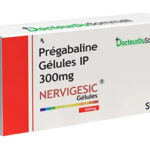Introduction
Nasal drug delivery has come a long way from being a rudimentary method of administering medications to becoming a sophisticated and versatile route embraced by modern medicine. This evolution reflects the growing understanding of nasal anatomy, pharmacokinetics, and drug formulation science, positioning nasal delivery as a powerful alternative to traditional routes like oral and injectable administration. Here, we explore the history, advancements, benefits, and future prospects of nasal drug delivery technology.
Definition
Nasal Drug Delivery Technology refers to the methods and systems used to administer medications through the nasal cavity, allowing drugs to be absorbed quickly into the bloodstream or directly target the brain and respiratory tract. This non-invasive route offers advantages like rapid onset of action, improved bioavailability, and bypassing the digestive system, making it effective for treating various conditions such as allergies, pain, and central nervous system disorders.
Early Beginnings: The Nasal Route in Traditional Medicine
Historically, the nasal route was utilized by various cultures primarily through the inhalation of herbal powders, aromatic oils, or vapors for local and systemic effects. Ancient Ayurvedic and Traditional Chinese Medicine systems recognized the nose as a direct pathway to the brain and respiratory system, applying nasal drops or inhalants to treat ailments such as congestion, headaches, and mental disorders. Despite its ancient origins, scientific exploration into nasal drug delivery remained limited until the mid-20th century, when researchers began examining the nose’s potential as a non-invasive drug administration site.
Why Nasal Drug Delivery? Advantages Over Other Routes
Nasal delivery offers several unique advantages:
- Rapid Absorption: The nasal mucosa is highly vascularized, allowing drugs to enter systemic circulation quickly and bypass first-pass metabolism in the liver.
- Non-invasive: Avoids needles, reducing discomfort and infection risk.
- Direct Nose-to-Brain Delivery: Bypasses the blood-brain barrier, potentially delivering neurotherapeutics directly to the central nervous system.
- Improved Patient Compliance: Easy self-administration and convenience.
- Localized Treatment: Effective for nasal and sinus conditions like allergies and congestion.
These benefits sparked interest in developing nasal delivery systems for a variety of drugs — from small molecules to biologics.
Scientific Milestones in Nasal Drug Delivery Technology
Understanding Nasal Anatomy and Physiology:
Advances in microscopy and imaging techniques allowed detailed studies of the nasal cavity’s structure – including the respiratory region, olfactory epithelium, and mucociliary clearance mechanisms. This knowledge was critical to designing effective formulations that can adhere to the mucosa long enough to deliver their payload.
Development of Nasal Spray Devices:
The introduction of metered-dose nasal sprays in the 1960s revolutionized nasal drug delivery by enabling precise dosing and improved patient convenience. Over time, designs evolved from simple squeeze bottles to advanced pump sprays, pressurized aerosol devices, and electronic nebulizers, enhancing drug deposition and reducing variability.
Emergence of Nasal Powder Formulations:
Dry powder nasal formulations emerged as an alternative to liquids, offering improved stability, longer shelf life, and potentially enhanced mucosal adhesion. Technologies like powder inhalers and spray-dried particles allowed targeted delivery with minimal irritation.
Mucoadhesive Technologies:
One major challenge for nasal drug delivery is mucociliary clearance, which rapidly removes foreign substances from the nasal cavity. Researchers developed mucoadhesive polymers-such as chitosan, carbopol, and hyaluronic acid-that prolong drug residence time on the nasal mucosa, improving absorption and bioavailability.
Nanotechnology and Liposomes:
The integration of nanotechnology into nasal delivery marked a new era. Nanoparticles, liposomes, and nanoemulsions can encapsulate drugs, protect them from enzymatic degradation, and facilitate controlled release. Additionally, nanoparticles can be engineered to target specific cells or receptors within the nasal cavity.
Nose-to-Brain Delivery Advances:
One of the most exciting developments in nasal drug delivery is the ability to transport drugs directly to the brain via the olfactory and trigeminal nerve pathways. This has significant implications for treating neurological conditions such as Parkinson’s disease, Alzheimer’s, epilepsy, and brain tumors. Intranasal insulin and oxytocin are examples of therapies being explored for cognitive enhancement and psychiatric disorders.
Current Applications of Nasal Drug Delivery
Today, nasal drug delivery is widely applied in various therapeutic areas:
- Allergic Rhinitis and Sinusitis: Nasal corticosteroids and antihistamines are standard treatments delivered via nasal sprays.
- Pain Management: Nasal sprays containing opioids or non-opioids offer rapid relief for breakthrough pain.
- Vaccination: Intranasal vaccines, like the influenza vaccine FluMist, offer needle-free immunization options with localized mucosal immunity.
- Hormone Replacement: Drugs like desmopressin and sumatriptan utilize nasal delivery for conditions like diabetes insipidus and migraines.
- Emergency Medicine: Nasal naloxone for opioid overdose reversal and midazolam for seizures provide rapid, life-saving effects.
- Neurological Disorders: Ongoing research explores nasal delivery of peptides, antibodies, and gene therapies for brain diseases.
Challenges in Nasal Drug Delivery
Despite the progress, several hurdles remain:
- Formulation Stability: Nasal mucus and enzymes can degrade drugs, requiring protective formulations.
- Dose Limitations: The small surface area limits the volume and dose that can be delivered nasally.
- Irritation and Safety: Repeated administration can cause mucosal irritation or damage.
- Patient Variability: Differences in nasal anatomy, mucosal health, and environmental factors affect drug absorption.
- Regulatory and Manufacturing: Ensuring quality, reproducibility, and compliance remains complex for novel nasal products.
The Future of Nasal Drug Delivery
The future of nasal drug delivery looks promising with ongoing innovations:
- Personalized Nasal Delivery Devices: Customizable devices adapting spray characteristics to individual nasal geometry.
- Smart Nasal Systems: Integration with digital health for dose monitoring and patient adherence.
- Advanced Biologics Delivery: Formulations enabling delivery of larger biomolecules like antibodies, nucleic acids, and vaccines.
- Combination Therapies: Multi-drug nasal sprays addressing complex diseases with synergistic effects.
- Enhanced Nose-to-Brain Targeting: Optimized nanoparticles and molecular carriers improving brain drug penetration and specificity.
- Regenerative Medicine: Intranasal delivery of stem cells and gene editing tools for neurodegenerative disorders.
Growth Rate of Nasal Drug Delivery Technology Market
According to Data Bridge Market Research, the size of the global nasal drug delivery technology market was estimated at USD 78.64 billion in 2024 and is projected to grow at a compound annual growth rate (CAGR) of 7.00% to reach USD 135.12 billion by 2032.
Read More: https://www.databridgemarketresearch.com/reports/global-nasal-drug-delivery-technology-market
Conclusion
The evolution of nasal drug delivery technology is a testament to the interdisciplinary collaboration between pharmacologists, engineers, and clinicians. What started as simple nasal inhalations has transformed into an advanced, precise, and versatile drug delivery route with wide-ranging applications. As scientific understanding deepens and technologies mature, nasal delivery is poised to play an even greater role in personalized and non-invasive therapies, improving patient outcomes across diverse medical fields.
- The Evolution of Nasal Drug Delivery Technology in Modern Medicine
- The Nasal Drug Delivery Technology market was valued at USD 78.64 Billion in 2024 and is expected to reach USD 135.12 Billion by 2032, growing at a CAGR of 7% (2025-2032). Get insights on trends, segmentation, and key players with Data Bridge Market Research Reports.
- Nasal Drug Delivery Technology Market Size, Nasal Drug Delivery Technology Market Share, Nasal Drug Delivery Technology Market Growth, Nasal Drug Delivery Technology Market Analysis, Nasal Drug Delivery Technology Market Trends, Nasal Drug Delivery Technology Market Forecast
Related posts:
 Best Topical Finasteride & Minoxidil Spray for Hair Regrowth
Best Topical Finasteride & Minoxidil Spray for Hair Regrowth
 What Are the Key Considerations Before Getting Filler Injections?
What Are the Key Considerations Before Getting Filler Injections?
 Effective Weight Loss Clinic Killeen: Your Path to Lasting Results
Effective Weight Loss Clinic Killeen: Your Path to Lasting Results
 How to Prepare for Your Appointment with the Best Plastic Surgeon in dubai for Fillers
How to Prepare for Your Appointment with the Best Plastic Surgeon in dubai for Fillers
 Comment les analgésiques sur ordonnance se comparent-ils aux options en vente libre ?
Comment les analgésiques sur ordonnance se comparent-ils aux options en vente libre ?
 Prozenith: A Natural Weight Loss Supplement 70% OFF Discount
Prozenith: A Natural Weight Loss Supplement 70% OFF Discount
 Recovery and Aftercare Tips for Gynecomastia Patients in Dubai
Recovery and Aftercare Tips for Gynecomastia Patients in Dubai
 Top Reasons to Choose a Vitamin D3 Soft Gel for Everyday Health
Top Reasons to Choose a Vitamin D3 Soft Gel for Everyday Health







